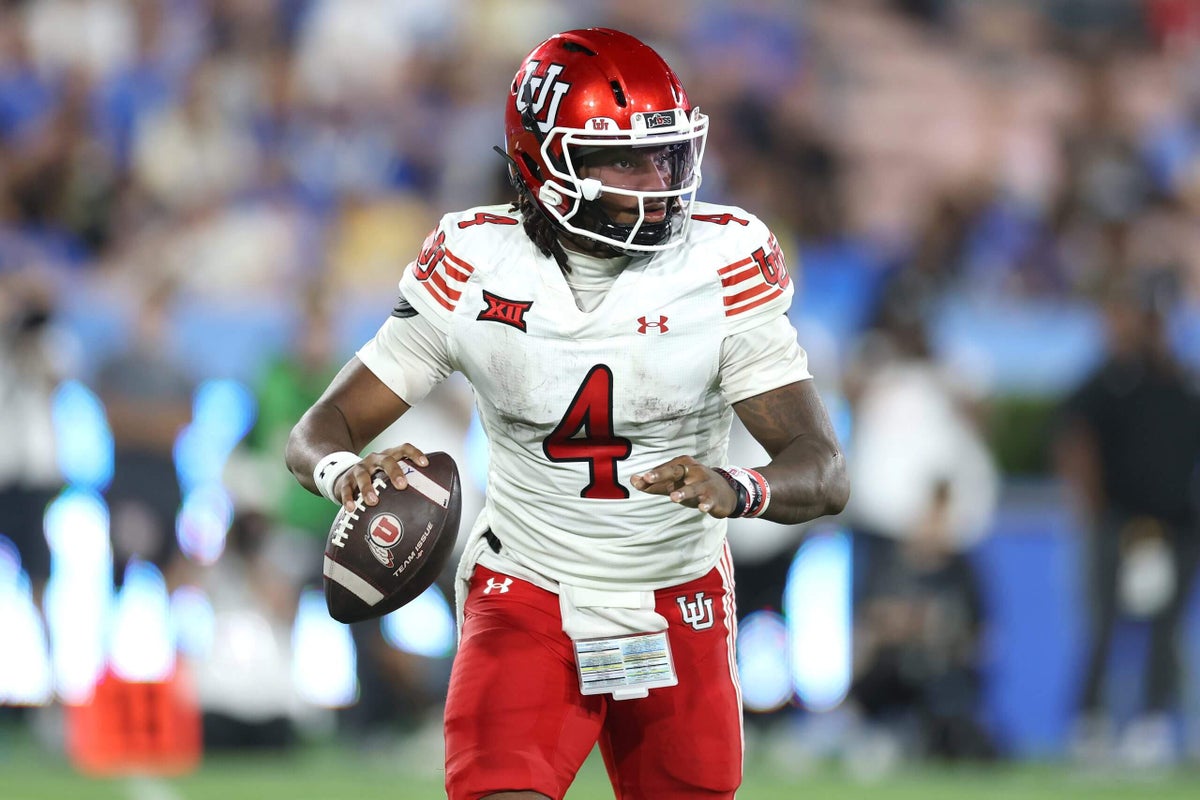Hey look, another elite weekend of college football. It’s not quite Week 1, but Week 4 gives us something we haven’t had yet: three conference games pitting ranked teams against each other.
That makes it the strongest collection of headliners since the Texas-Ohio State/LSU-Clemson/Notre Dame-Miami smorgasbord of Labor Day weekend, washed down by Florida State’s trouncing of Alabama and capped off by a Bill Belichick upside-down cake. So why isn’t anyone saying so?
Because last week’s three ranked games were heavy on name power — Notre Dame, Georgia, Miami, Tennessee and Texas A&M — with interloper South Florida. This week, we’re looking at Illinois-Indiana. Texas Tech-Utah. And even in the brand-friendly game, Auburn at Oklahoma, the visitor is traveling from a state in which it is perennially No. 2.
That should not fool anyone into dismissing the quality of the teams at hand. Illinois and Indiana may have a collective football history that comes up short of what the University of Chicago did in the 1900s, but they’re legitimately good. Texas Tech and Utah will match quarterbacks Behren Morton and Devon Dampier. College football fans should, and soon will, know both well.
You know what this could do? It could get us using the “P” word, a word that has never really applied to college football. And I’m not talking periwinkle, pinot noir or prudence. I’m talking parity. Actually, colleague David Ubben did use it this week in discussing the wildly unpredictable start to the season, but I’m still a bit hesitant to go all the way there.
Maybe it’s because that word defines the American professional sports league that enjoys its own free minor league development system each week on campuses from Athens to Eugene. It’s almost impossible to stay bad for long in the NFL, it’s hard to sustain a true dynasty and the whole thing is built for everyone to still be in the playoff hunt on Dec. 1 and for most to hover around 8-9/9-8.
College football will never be that. Not until the official debut of the 20-team NFL Campus North, anyway. Which will, of course, face the winner of the 20-team NFL Campus South in the Student-Athlete Bowl each February in Athens — Greece, not Georgia — starting in 2050.
Let’s live in the moment and acknowledge that there can be different degrees of parity. Ohio State did just beat Notre Dame for the national title, and we are still looking at many of the same programs at the top of the sport. Consistent high school recruiting success still correlates with on-field success.
We also have Indiana going for a second straight College Football Playoff bid. We have Illinois joining the pursuit and providing an Illini-Hoosiers matchup with excitement not seen since Deon Thomas and Alan Henderson were battling in the post. Vanderbilt is unbeaten, ranked No. 20 and yet to be humbled for preseason “national title” mentions.
Check Chris Vannini’s latest rankings of all 136 FBS teams — rankings that should be taken much more seriously than either poll, as recent voter gaffes have reminded — and you’ll see those three plus the following in his top 25: Iowa State, Georgia Tech, Missouri, Utah, South Florida, TCU and Tulane.
A coach, a quarterback and some money can get just about any program into the old boys club. However, as a Power 4 AD pointed out this week, the “V” word might be more appropriate. “Volatility at the top means more hope at the bottom,” he said, “and if you have an average but solid-built team with a good QB, a la Vanderbilt, you’ve got a shot to have a special season.”
I like that. I think I’ll hold off on declaring any degree of the “P” word until we actually get a non-traditional national champion. Bud Elliott of 247Sports came up with the “blue chip ratio” in 2013, and it continues to hold true: To win it all, a college football team must have a baseline level of talent that involves more four- and five-star recruits than two- and three-star recruits signed in the previous four seasons.
Eighteen teams qualify this season, in order: Alabama (89 percent four- and five-stars), Ohio State (89), Georgia (84), Texas A&M (82), Oregon (78), Texas (78), LSU (73), Notre Dame (73), Oklahoma (70), Penn State (68), Miami (64), Florida (64), Auburn (64), Michigan (57), USC (57), Clemson (55), Tennessee (54) and Florida State (54).
The champ probably comes from that list. However, you’ve also already got two-loss crises at Notre Dame and Clemson, another burgeoning disaster at Florida, a former guaranteed No. 1 pick of 2026 at Texas who is now projected as Mr. Irrelevant in 2027, and serious questions for the team that is supposed to be the most talented of the bunch but is no longer coached by Nick Saban.
Iowa State, Georgia Tech, Ole Miss … potential party crashers abound. The winners of Texas Tech-Utah and Illinois-Indiana should be taken seriously. Vanderbilt, ranked in September for the first time since 1956, should be 5-0 heading to play that Bama team on Oct. 4.
At the very least, this is fun with a capital “F.”
(Photo of Devon Dampier: Sean M. Haffey / Getty Images)
